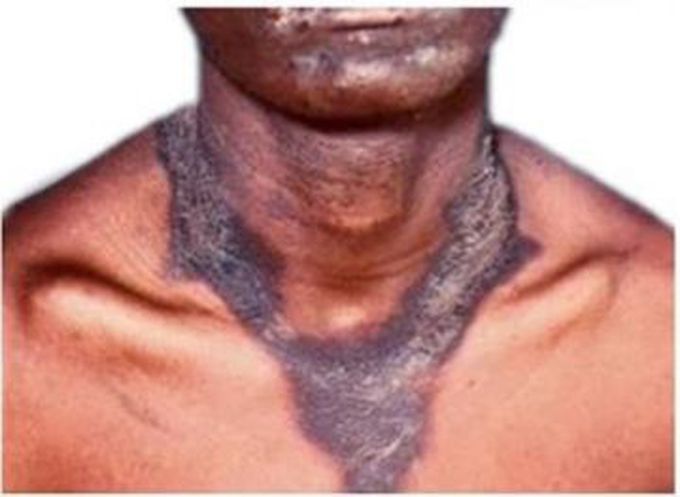


Diagnose it..
Young adult Patient presented with 1. Severe fatigue 2. Diarrhoea 3. Dementia 4. Delusional thoughts 5. Skin changes Guys now get something out of your head. Answers will be posted at 7:15 pm Tuesday GMT.
Pellagra is a systemic disturbance caused by a cellular deficiency of niacin, resulting from inadequate dietary nicotinic acid and/or its precursors, the essential amino-acid tryptophan. In some developing countries this disease is frequent, and is the most frequent clinical feature of nutritional deficiency of adult. The principal causes of pellagra are: nutritional niacin deficiency; chronic alcoholism; gastro-intestinal mal- absorption; some medications (5-fluoro-uracil, isoni- azid, pyrazinamide ehtionamide, 6-mercaptopurine, hydantoins, phenobarbital and chloramphenicol). The diagnosis of pellagra is based on the patient's history and the presence of "3 D syndrome": Dermatitis, Diarrhoea, and Dementia. The dermatitis caused by pellagra is a bilaterally symmetrical erythema at the sites of solar exposure. The dermatitis begins in the form of an erythema with acute or intermittent onset gradually changing to an exsudative eruption on the dorsa of the hand, face, neck, and chest with pruritus and burning. Acute dermatitis of pellagra resembles sunburn in the first stages, sometimes with vesicles and bullae. The gastro-intestinal disturbances are: anorexia, nausea, epigastric discomfort and chronic or recurrent diarrhea. Anorexia and malabsorbative diarrhea lead to a state of malnutrition and cachexia. Stools are typically watery, but occasionally can be bloody and mucoid. Neuropsychologic manifestation included photophobia, asthenia, depression, hallucinations, confusions, memory loss and psychosis. As pellagra advances, patient become disoriented, confused and delirious; then stuporous and finally die. Pathological changes in the skin is non-specific, there are no chemical tests available to definitively diagnose pellagra. However low levels of urinary excretion of N-methylnicotinamide and pyridone indicates niacin deficiency. The treatment of pellagra consisted to exogenous administration of niacin or nicotinamide cures. Topical management of skin lesions with emollients may reduce discomfort. The therapy should also include other B vitamins, zinc and magnesium as a diet rich in calories.
Brilliant Macular Degeneration the picture does shows the Casal collar or Casal necklace . Casal collar or Casal necklace is a clinical sign in which there is an erythematous pigmented skin rash in the distribution of a broad collar (dermatomes C3 and C4). It is seen in patients with pellagra.


